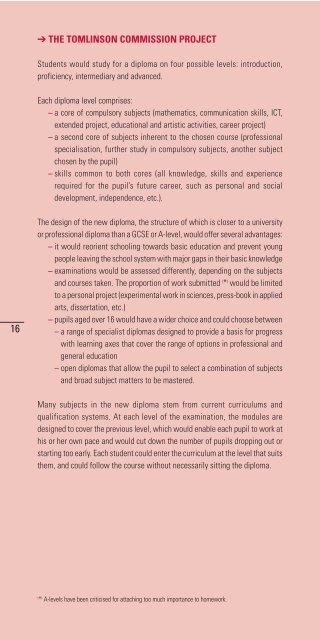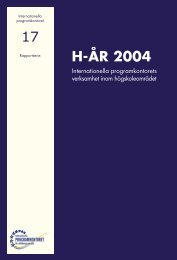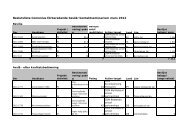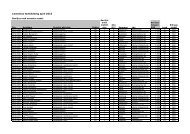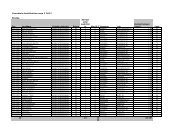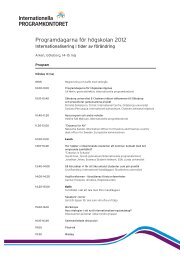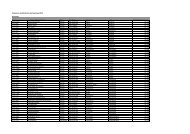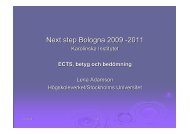Baccalauréat, A-levels, Abitur, Bachillerato
Baccalauréat, A-levels, Abitur, Bachillerato
Baccalauréat, A-levels, Abitur, Bachillerato
You also want an ePaper? Increase the reach of your titles
YUMPU automatically turns print PDFs into web optimized ePapers that Google loves.
➔ THE TOMLINSON COMMISSION PROJECT<br />
Students would study for a diploma on four possible <strong>levels</strong>: introduction,<br />
proficiency, intermediary and advanced.<br />
Each diploma level comprises:<br />
– a core of compulsory subjects (mathematics, communication skills, ICT,<br />
extended project, educational and artistic activities, career project)<br />
– a second core of subjects inherent to the chosen course (professional<br />
specialisation, further study in compulsory subjects, another subject<br />
chosen by the pupil)<br />
– skills common to both cores (all knowledge, skills and experience<br />
required for the pupil’s future career, such as personal and social<br />
development, independence, etc.).<br />
16<br />
The design of the new diploma, the structure of which is closer to a university<br />
or professional diploma than a GCSE or A-level, would offer several advantages:<br />
– it would reorient schooling towards basic education and prevent young<br />
people leaving the school system with major gaps in their basic knowledge<br />
– examinations would be assessed differently, depending on the subjects<br />
and courses taken. The proportion of work submitted ( * ) would be limited<br />
to a personal project (experimental work in sciences, press-book in applied<br />
arts, dissertation, etc.)<br />
– pupils aged over 16 would have a wider choice and could choose between<br />
– – a range of specialist diplomas designed to provide a basis for progress<br />
with learning axes that cover the range of options in professional and<br />
general education<br />
– – open diplomas that allow the pupil to select a combination of subjects<br />
and broad subject matters to be mastered.<br />
Many subjects in the new diploma stem from current curriculums and<br />
qualification systems. At each level of the examination, the modules are<br />
designed to cover the previous level, which would enable each pupil to work at<br />
his or her own pace and would cut down the number of pupils dropping out or<br />
starting too early. Each student could enter the curriculum at the level that suits<br />
them, and could follow the course without necessarily sitting the diploma.<br />
(<br />
* ) A-<strong>levels</strong> have been criticised for attaching too much importance to homework.


